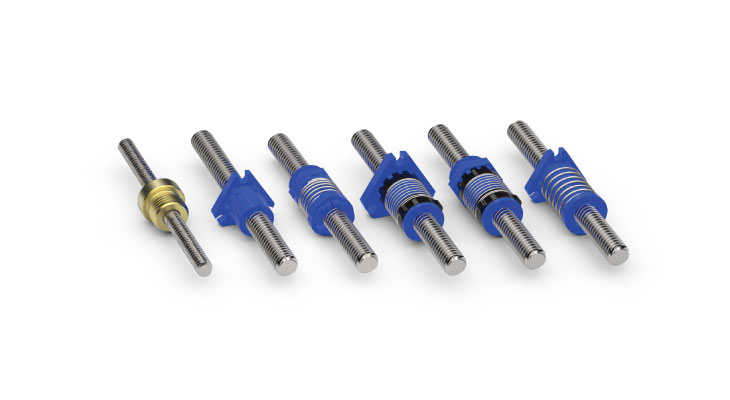Important Considerations for Acme Screw Selection

Acme screws, which convert rotary into linear motion, are quickly becoming the preferred choice for design engineers among numerous motion control applications for a multitude of reasons. Acme screws are affordable. They are estimated to offer a cost savings of up to 85 percent compared to alternative motion control components. They are also precise, flexible, and easy to maintain for long-lasting success.
Lubrication: Acme screws are generally far less cumbersome to maintain than competing technologies. However, a big part of ensuring their long-lasting, maintenance-free life is choosing the right lubrication for your application. Acme screws do experience friction when rotary motion is converted to linear motion. However, the right lubrication not only reduces this friction, but limits wear, reduces maintenance, and maximizes the life of the Acme nut.
Aside from friction reduction, lubrication also transfers heat, carries away debris and contaminants, and guards against corrosion. There are two main types of lubricants used with Acme lead screws: liquid and non-liquid. The former generally consists of petroleum-based oils that don't chemically react and can operate at high temperatures. Conversely, non-liquid (or dry) lubricant uses powder where the liquid lubricant is ineffective or not practical. Helix Linear Technologies uses proprietary, specially engineered resins that have lubricants integrated into them. The polymer nut transfers some of the lubricants to the screw. This allows for a low coefficient of friction for the screw nut combination. The lower the coefficient of friction, the lower the drive torque is required and the longer the life.
While acme screws are a massive player in linear motion applications, there's a lot to consider when selecting the right one for any particular application. Failure to carefully analyze the necessary accuracy, all the loads present, and the type of lubrication could lead to an application that's more likely to fail.


